Black Diamond Ozone Harness Review
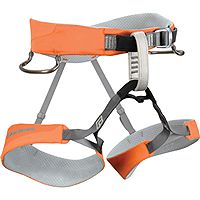 After hanging for six hours on an overhanging wall, with an assortment of hardware pulling from the two gear loops, my legs and waist were in surprisingly good shape considering I was wearing the Black Diamond Ozone harness, marketed as a sleek, sport climbing rig. Somehow, I don’t think BD had multi-hour hang sessions in mind when putting out this hip-looking orange harness that weighs in at a scant 11 ounces. I had already used the Ozone for sport climbing, single pitch trad climbs, developing sport climbs and a little multi-pitch, so I figured, why not take it out for some rebolting work? With bags of bolts, wrenches, and assorted hardware, in addition to drill, hammer and crowbar, clipped to the two gear loops, I gave it a go and was amazed to see it perform better than my big wall harness. That’s right, I somehow I felt better after this long session in a sleek sport harness than I did after using my super fat big wall rig.
After hanging for six hours on an overhanging wall, with an assortment of hardware pulling from the two gear loops, my legs and waist were in surprisingly good shape considering I was wearing the Black Diamond Ozone harness, marketed as a sleek, sport climbing rig. Somehow, I don’t think BD had multi-hour hang sessions in mind when putting out this hip-looking orange harness that weighs in at a scant 11 ounces. I had already used the Ozone for sport climbing, single pitch trad climbs, developing sport climbs and a little multi-pitch, so I figured, why not take it out for some rebolting work? With bags of bolts, wrenches, and assorted hardware, in addition to drill, hammer and crowbar, clipped to the two gear loops, I gave it a go and was amazed to see it perform better than my big wall harness. That’s right, I somehow I felt better after this long session in a sleek sport harness than I did after using my super fat big wall rig.
So, how is that possible? Black Diamond will tell you all about their Kinetic Core Construction which “employs a tri-laminate of liquid crystal polymer (LCP) technology that’s also been used in the latest NASA spacesuits” blah, blah, blah. Instead of boring you with super technical details, here’s the real deal. When you feel around in the Ozone, you’ll notice that the 1” webbing that is standard on any harness only goes a couple of inches into the harness. There, it is somehow magically attached to the harness body or padding through their polymer technology. That means when you hang in your harness, your weight is being distributed throughout the full width of the harness body or padding. Compare that to a typical harness, like I did with my Primrose (yeah, I’ve got a woman’s harness) and you’ll notice that in the traditional padded harness the 1” webbing runs all the around and is merely covered up by padding. Hence, the harness body or padding may try to distribute weight, but it can’t do it like the Ozone can.
The Ozone compares favorably with the Arcteryx line of super lightweight harnesses, featuring a ridiculously light weight and small size. I love stuffing this thing in my pack because it takes no room at all and you feel like a rock star when you pull it out and slide it on. The Ozone is minimalist, featuring just two gear loops, hence, it’s appeal to sport climbers who are only clipping draws. As I said earlier, I put this thing through the ringer on numerous multi-pitch climbs and was able to do so with the use of a gear sling and/or racking gear together to fit it on the two loops. My only wish for it would be to have some type of third gear loop or haul loop on the back. It wouldn’t add much to the weight and would make it easier to organize gear or trail a line when multi-pitch climbing. That’s where I think people can get this harness wrong. Sure, it’s marketed for sport climbing, but it feels so sweet to pull on a lightweight harness and blast up a bunch of pitches in super speedy style. This summer Hayden Kennedy and I both were wearing Ozone’s as we laughed our way up 12 pitches in 2 hours on Harlequin Dome in Tuolumne, reveling in the glory of climbing light with these super light rigs and a small rack.
A few other small points before I lay it to rest. There are some who will bemoan the lack of adjustable leg loops, making it a more difficult fit. Personally, I love fixed leg loops, when they fit, as it reminds me of the old Chaos I used to wear. I love the simplicity of those fixed loops, although at times it can be hard to get that proper fit. I like the sleek, smooth way the loops are “attached” to the waist belt with some small metal clips attached to some elastic material, but the attachment point on the leg loops is lightweight, thin material that is wearing quickly. Surely, BD didn’t expect people to be romping up chimneys and offwidths with this thing so it’s only a problem that a few tradsters will encounter.
Simply put, the Ozone rocks and surprised me greatly in its ability to be much more than a harness for sport climbing at Rifle. For 6 weeks, climbing trad and multi-pitch in Yosemite and the Sierras this past summer, I found it was the only harness I needed and definitely the only one I wanted to pack. Grab one of these and you too can enjoy the feel of a super sleek, sexy, lightweight climbing rig that will make you feel like you can float up the rock, or at the very least hang effectively like me.
3 Responses to Black Diamond Ozone Harness Review
Bulldog Creek Dog Walk (IV WI 4+)
Hayden Carpenter and Tom Bohanon recently repeated an obscure ice climb on the south side of Mt Sopris. Given a brief mention in Jack Robert’s ice guide, Bulldog Creek Walk is described as being 100 meters of WI 4. What they found was seven pitches of ice in a remote setting that makes for one […]
Connect with Us






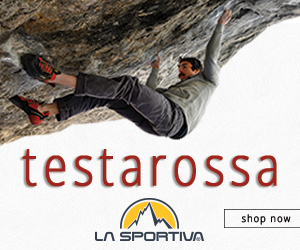

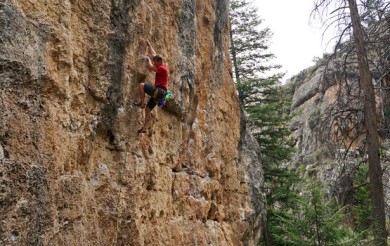
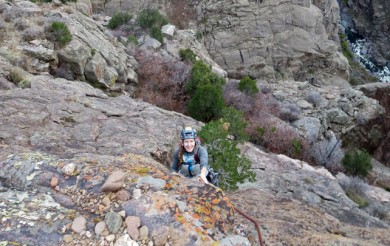
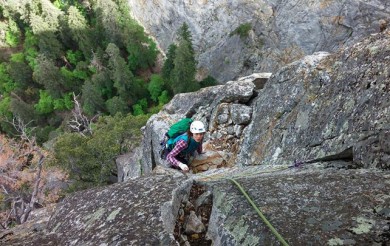
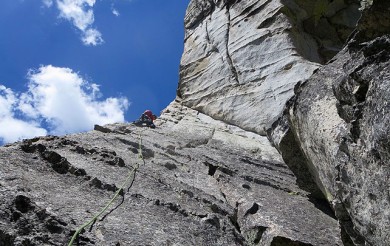



Great review. Now I’m not saying this harness isn’t comfortable, but to somehow suggest that this harness is _more_ comfortable than a big wall harness with drilling gear hanging off it to me points to one of two things: you’re stretching the truth (putting it lightly) or your big wall harness sucks the big one.
Good point Lee, I am probably guilty of stretching the truth a bit, or more appropriately, not being clear with my statement, “I somehow felt better” in the Ozone. I wasn’t very clear there and I’m certainly not advocating the Ozone as a heavy duty wall rig when hanging on El Cap routes. I’ve thought a good deal about how the Ozone could seem to perform better than my big wall rig and it seems to down to how a harness like the Ozone fits compared to my big wall harness (a Yates Shield harness) which I’ve been rocking in for years on many, many walls. Try as I might, it’s hard to get the Yates Shield to cinch up real snug, whereas you can definitely do that with the Ozone. The result of that seems to be that when you’re on a steep overhang (I was rebolting some 45 degree-ish routes and some roofs that were dead horizontal, it seems like you end up sliding around in the big wall harness and not making use of the many inches of waist band that the harness offers. In contrast, because the Ozone snugs up so easily when you’re torqueing around on an overhang, your body isn’t sliding around and the weight seems to be more evenly dispersed throughout the harness. I don’t think this is an issue as much on less vertical routes, like most big wall routes because you are rarely hanging in seriously overhanging terrain for very long.
Now, I’ll readily admit that someone else could do a much better job of analyzing the mechanics involved here and that I may have just had some “fluke” experience. But, I’ve now used the Ozone extensively for multi-pitch and it performs really well. It doesn’t do well with trying to carry a lot of weight on the gear loops (hence, the need for a gear sling usually) but the harness supports and distributes weight very well. For that reason, unless I’m carrying a ton of kit and kaboodle around like on a big wall or more serious route developing missions (rebolting is typically less gear intensive because you know exactly which few tools you need) then I’d rather take the Ozone, and have done so all year long.
Love your review, (I also agree with Lee.) However the white on black has got to go. With the long paragraphs it’s very hard to read for any lenght of time I’d suggest a color change or shorter paragraphs PLEASE!